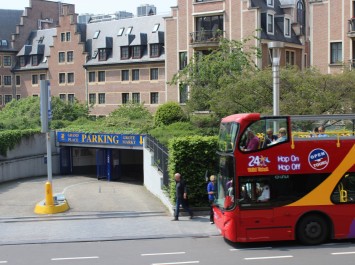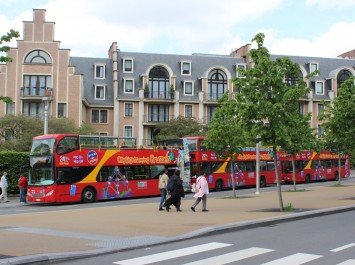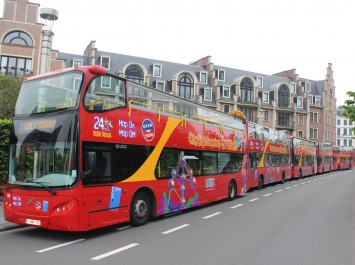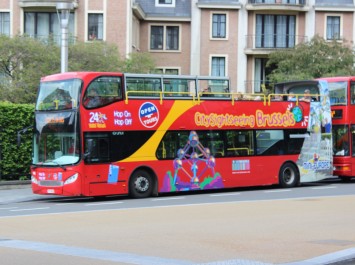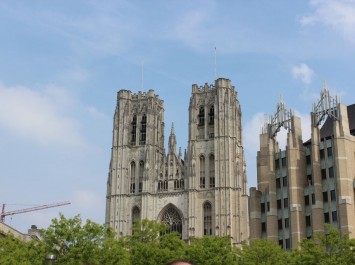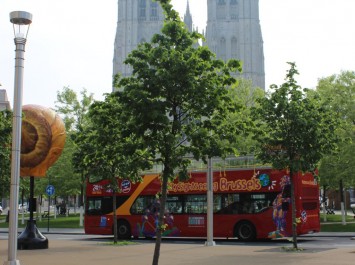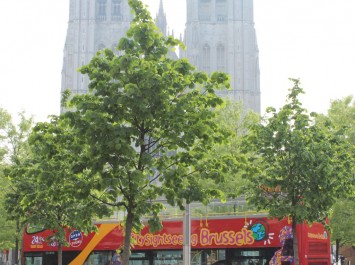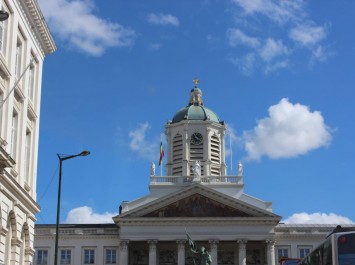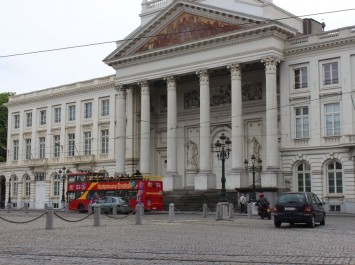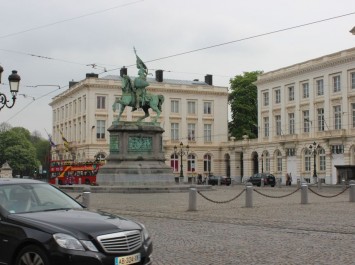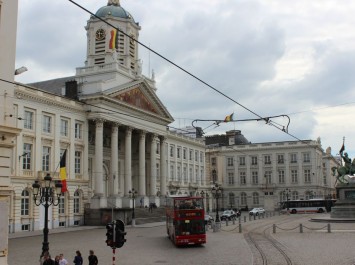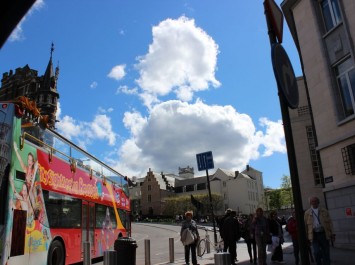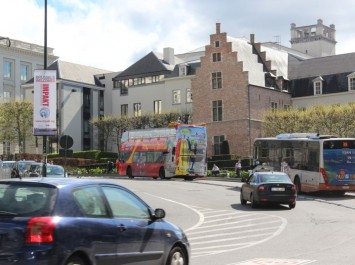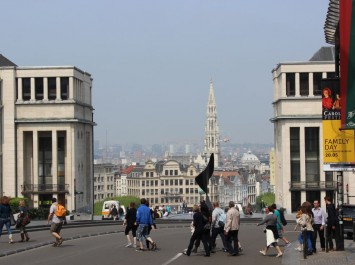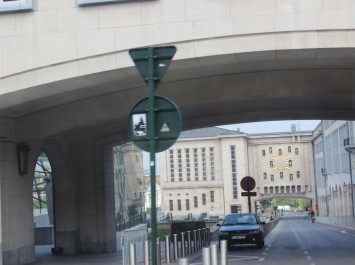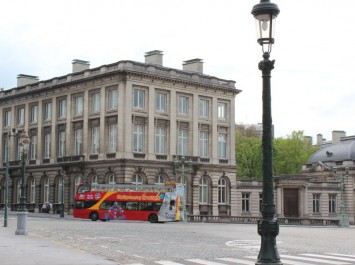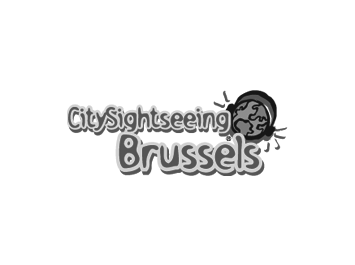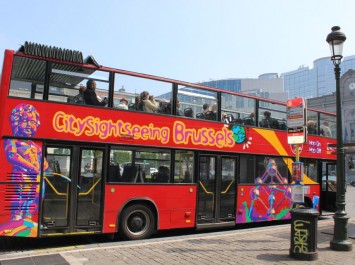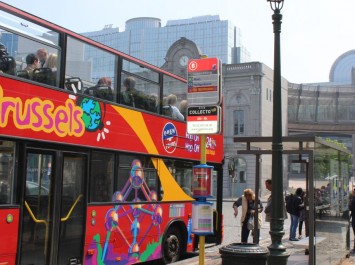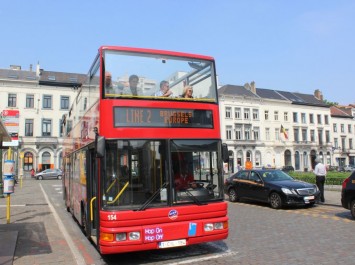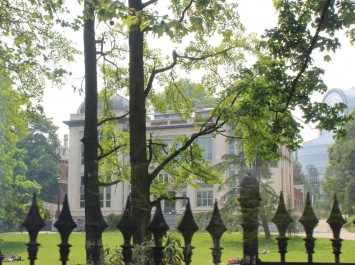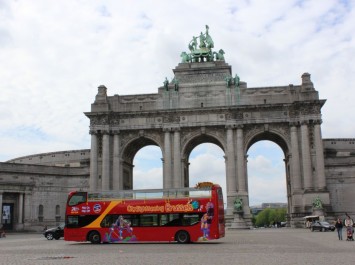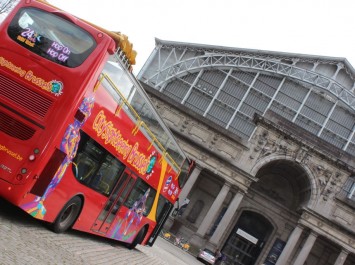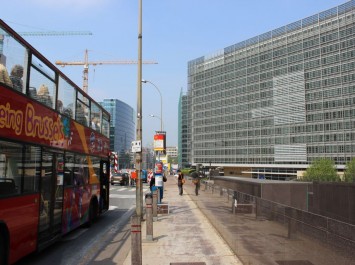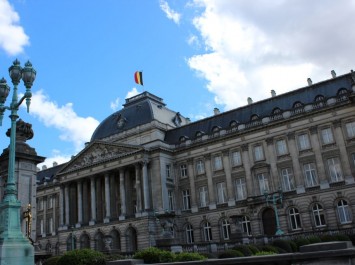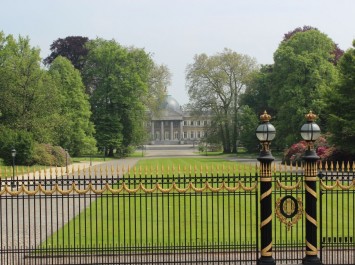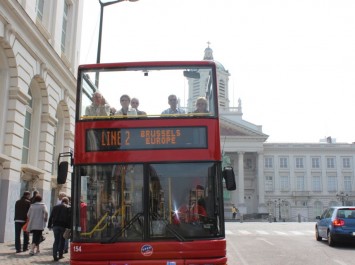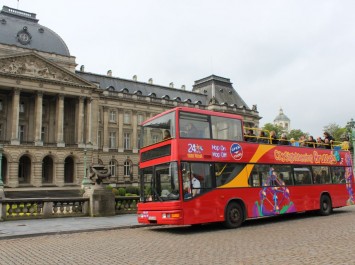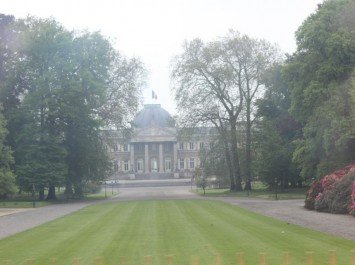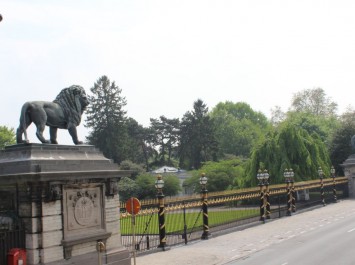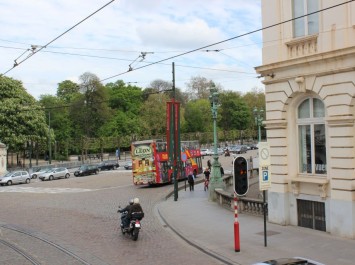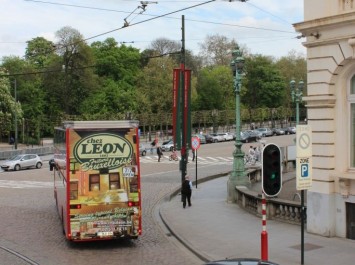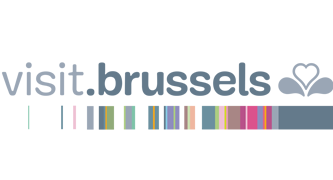Central Station
The Grand Place is a Unesco World Heritae site. Construction on it began in the 15th Century. First of all, some market halls and trade guild houses, then a town hall to establish the authority of this trading center. Bombarded for 3 days by the French army in 1695, it was almost completely destroyed but, like a phoenix, it went on to rise from the ashes in 3 years. That's why four styles stand alongside each other or sometimes even overlap: it's a wonderful hotch-potch of Gothic, opulent baroque, neoclassical and neogotic.
In the Rue des Sables 20, you have the Belgian Comic Strip Center. It is a former Waucquez store built in 1906 by Victor Horta, the CBBD benefits from volumes and light characteristic of Art Nouveau. Looking back at the 60 years of history of the 9th Art in Belgium, the collection gives pride of place to Hergé, the father of Tintin. Ther is even a reading room for devouring them on the spot.
The Cathedral of Saints Michael and Gudula in a Brabant Gothic-style cathedral that takes us back to the 13th century into the atmosphere of the great builders. Its two towers give it the French look of the period. It is the most important church in Brussels. Our Royal Family still holds its marriages in this church.
The MOOF or Museum of Original Figurines shows the 9th art transposed into figurins along a themed trail for (re)discovering the great herous and myths of Comic Strips.
Place Royal
The Royal Museum of Fine Arts of Belgium is dedicated to paintings from the 15th till 18th century and has over hundred masterpieces of f ex Memling, Jeroen Bosch, Breughel, Van Dyck and Rubens.
In the Magritte Museum more than 200 pieces of René Magritte are presented over more than 2500m2. The Museum is a leading centre in its field when it comes to knowledge of the artist.
The BELvue Museum on display in the Bellevue House, gives a collection that looks back at the chronology of the history of Belguim Journey through time to discover in pictures: Belgian Independance, la Belle Epoque, the Great wars, the golden sixties and the federalisation of the country.
The archeaological site of Coudenberg presents in an impressive mise en scène this archaeological site reveals the remains of the Dukes of Burgundy and the Aula Magna of Charles V: chapel, ceremonial room and rue Isabelle, now underground.
The Musical Instruments Museum has over 1200 instruments that are displayed and played in an Art Nouveau building that, in its day, housed the Old England store. On the top floor there is a restaurant with a panoramic view over the city center.
The Center for Fine Arts of Bozar was erected in 1928 by the architect and master of Art Nouveau, Victor Horta. It is a centre of cultural and artistic life in Brussels. This is the first large multipupose arts center of its type in Europe.
Sablon
The Grand Sablon is more the luxury district, of the conservative chic and great master chocolatiers. It's known for it's antique shops which hold a market every weekend, their very stylish shops and nice terraces where you simply have to sit at a table for a while, sipping an aperitif.
The Square du Petit Sablon is the square surrounded by a superb wrought-iron balustrade, decorated with 48 bronze statuettes, which represent the ancient crafts once practised in Brussels. It was inaugurated in 1890. Ten statues decorating the rear of the park, intend to illustrate the 16th century in Belgium. The statues of the Counts Egmont and Hornes symbolise the fight against Spanish tyranny in the 16th century.
The Church of Notre-Dame au Sablon is a precious example of the flamboyant Gothic style so admired in Brabant owes its splendour to the city's Guild of Crossbowmen that built it in the 15th century. You enter the Egmontpark through a carriage entrance on Boulevard de Waterloo, by a narrow pathway on Rue du Grand Cerf of by Rue aux Laines. The park is home to, among others, the Pollepel, a magnificent well, and a statue of Peter Pan.
Avenue Louise
Les Marolles, is the locality between Rue Blaes and Rue Haute. This has always been the district of resourcefulness, salvaging and solidarity. Ther's a night shelter here, the Mont-de-Piété (social pawnbroking institution) and free showers provided by the Order of Malta. A very busy flea market is held every day on the Place du Jeu de Balle. They also have comic bistros, an offbeat kind of humour called zwanze in the local dialect.
Boulevard de Waterloo and Avenue Louise are the streets where the biggest names in fashion have set up their shop. This is the place for luxurious and quality shopping. And even if it's reflected in prices, it is still lower than they are in many other cities.
The Justicepalace was the masterpiece of architect Joseph Poelaert, and is an example of eclectic style.
Art Nouveau - Trinity
The Horta Museum is the genius and mastery work of Victor Horta were at their peak in 1898 when he built this house that was to serve as his home and studio. The façade full of arabesques and wrought ironwork sets the tone of the visit straightaway.
Qualityshopping in a Neuilly-sur-Seine ambience is what you can do at Châtelain with broad shady avenues and mansions. And to savour this nice time, some restaurants, terraces and an excellent patissier.
The P. Hankar House is built in 1893. The façade of this first important work of Paul Hankar presents, by its innovative design, a break with historical architecture.
The Solvay House is a luxurious residence built by Victor Horta in 1894 for the Solvay family. The architect was given a free hand and designed the interior and furnishings down to the last detail.
This magnificent building, the Wielemans House, was built in 1925 on request of the owner of the big brewery Wielemans-Ceuppens, for his wife. Mrs Wielemans was an admirer of Spain: she therefore asked the architects to reproduce the Alhambra of Granada.
Abbaye de la Cambre
The Abbaye de la Cambre was founded in 1201 by a Brussels fair lady.
Villa Empain is the center for different types of activities and entertainment which promotes dialogue among the different cultures of East and West.
In the past, strings of ponds used to run along the valley of Maelbeek, around Brussels. In Ixelles two ponds remain, the Ponds of Ixelles. Places for pittoresque walks lined with majestic trees, Art Nouveau houses and the Flagey cultural center. A peaceful atmosphere reigns.
Covering an area of 124 hectares, the Bois de la Cambre is an old part of the Forêt de Soignies. It was annexed to the city in 1842 and its layout conceived by the landscape architect Keilig.
Flagey
Flagey, the sound factory... A unique piece of architectural heritage synonymous with cultural and technological innovation. During the fifties and sixties, 'le Paquebot'(the Steamship) was la Maison de la Radio (Broadcasting house). Flagey is the place for musical and visual creation, a space of communication, dialogue and encounters, a house open to the world.
Place du Luxembourg
The Place du Luxembourg is a square more of a wold agora. Mild weekday evenings are the best time to have a drink in an amazing ambiance.
The Gare du Luxembourg is the building with clock and rounded pediment. It is used to be the essential transit point for anyone wanting to head south.
The Parlemantarium is the European Parliaments visitors center. It is open daily and is free.
Visit to the European Commission can only be done after written request.
Leopold Park
In the Museum of Natural Sciences it is impossible to miss it: the superbly displayed iguanodons give you an awe-inspiring show, the only one of its kind in the world. As for the Evolution Gallery, that's a real journey through the history of living beings.
The Leopold Park is a small island of tranquility on the edge of the big sites of the European district. A landscaped, undulating park, which houses the Museum of the Institute of Natural Sciences and other scientific institutes such as the magnificent Solvay Library.
The Solvay Library is a meeting venue particularly popular with conference participants.
The Wiertz Museum sets up in the artist's studio, a little house full of giant frescoes, which were very popular in the middle of the 19th century.
Cinquantenaire
The Cinquantenaire Museum is devided in four departments: National Archaeology, Antiques, Non-European Civilisations and European Decorative Arts.
The Royal Museum of the Army and Military History is a museum where you'll find medieval armour and souvenirs from the Napoleonic campaigns as well as a hundred or so aircraft and armoured vehicles from the two Great Wars. A breathtaking panoramic view awaits you at the top of the arcade.
Parked beneath a metal construction erected in 1880 Autoworld presents Minervas and Imperials together with the Model-T Ford, ... In total 400 cars, all in roadworthy condition, tell the story of the car industry and of rare models that once belonged to VIP's. With your ticket you have 1€ reduction on a adult ticket.
The cinquantenaire arcade was planned in 1880 to commemorate the 50th aniversary of independance of Belgium, but is has been completely finished in 1905.
The Horta Pavilion is an impressive bas relief which was the first building of Victor Horta.
Architect Paul Cauchie built his own house in 1905. The house has a spectacular Art Nouveau façade.
Shumann
At Shumann Square you have several buildings of European Institutions. Justus Lipsius which is the council of the EU, the Berlaymont is the seat of the European Commission.
At Ambiorix Square you have lots of Art-Nouveau houses. Take your time to have a little walk over there.
Royal Palace
Brussels Park is crisscrossed with broad walkways, which offer surprinsing perspectives. All alignment and symmetry, this is a place designed to be crossed. But, alont the winding pathways, it conceals secluded little leafy clearings for daydreaming in peace and quiet beneath the tender gaze of muses ro Roman emperors, a few water features and fountains.
On one side of Brussels Park you have the Royal Palace. If the Belgian flag is flying on its roof, it's because the king is in Belgium. The Palace is open to visitors during the summer, just after our national holiday (21/07) until mid-September. If you have the good fortune to bin in Brussels during that period, don't miss the opportunity to go and see the ceremonial rooms, the trone room and the mirror room with its ceiling set with scarab beetle wing cases.
On the other side of the Park you have the Parliament.
The BIP (Brussels Info Place) houses the Brussels tourist information office and a fun and interactive exhibition presenting the Brussels Capital Region.










